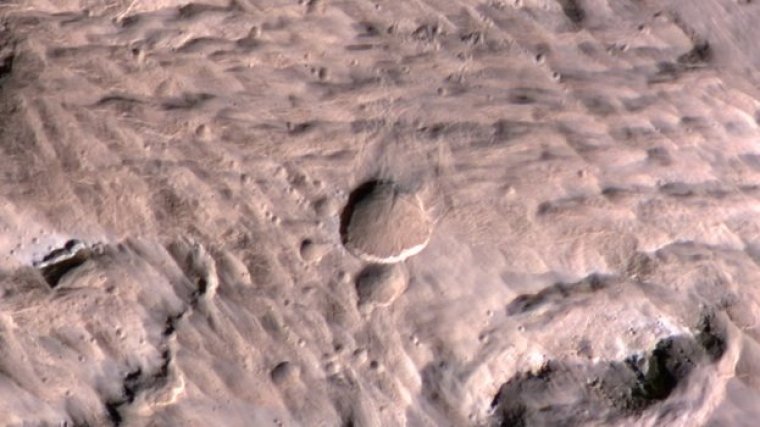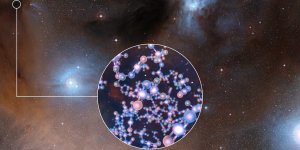| News / Space News |
NASA Mars weathercam helps find big new crater
NASA | MAY 23, 2014
Researchers have discovered on the Red Planet the largest fresh meteor-impact crater ever firmly documented with before-and-after images. The images were captured by NASA's Mars Reconnaissance Orbiter.

This is the largest fresh impact crater anywhere ever clearly confirmed from before-and-after images. Image credit: NASA/JPL-Caltech/Univ. of Arizona
The crater spans half the length of a football field and first appeared in March 2012.
The impact that created it likely was preceded by an explosion in the Martian sky caused by intense friction between an incoming asteroid and the planet's atmosphere. This series of events can be likened to the meteor blast that shattered windows in Chelyabinsk, Russia, last year.
The air burst and ground impact darkened an area of the Martian surface about 5 miles (8 kilometers) across.
HiRISE (High Resolution Imaging Science Experiment) reveals more than a dozen smaller craters near the two larger ones seen in the CTX (Telescopic Context Camera) image, possibly created by chunks of the exploding asteroid or secondary impacts of material ejected from the main craters during impact. It also reveals many landslides that darkened slopes in the 5-mile surrounding area.
YOU MAY ALSO LIKE



